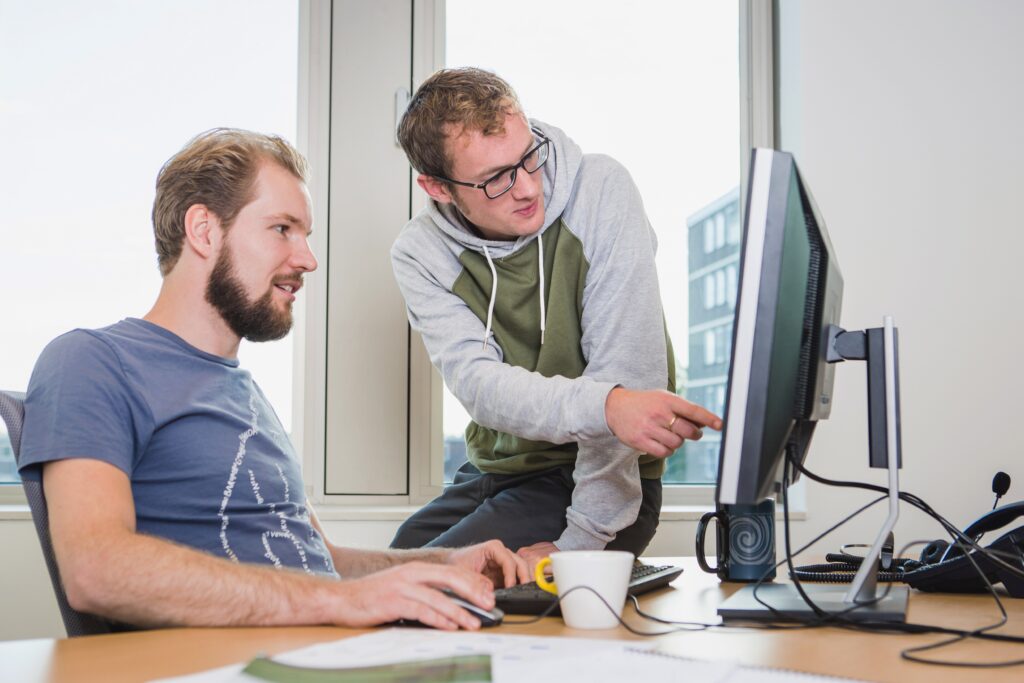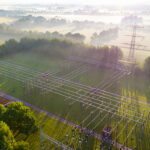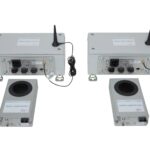
The challenges of the energy transition
The growth of sustainable and decentralized energy production is posing a number of challenges for electricity grid operators. One of the most important is to find a balance between supply of and demand for electricity. By contrast with conventional power plants, it is impossible to regulate energy generation from sustainable sources such as solar and wind power. Moreover: the grid has historically been designed for one-way traffic from the power pant to the user. New technology can prevent instability and overloading.
Article from Objective 33, May 2020
Nature is unpredictable
According to the Dutch climate agreement, by 2030 70 % of the total energy demand must be met with energy from renewable sources. This energy transition has huge consequences for the grid operators, the market and all contracting parties. The quantity of wind and solar energy is difficult to predict and fluctuates substantially over time. During the stormy month of February 2020, for instance, more than twice as much wind energy was generated as during the same month in 2019, with the result that the Netherlands briefly had a negative energy price. Solar energy is also subject to strong fluctuation, although the sum of wind and solar power is usually more or less stable.
More electrification
The unpredictable nature of sustainable energy is not the only challenge that grid operators are facing; rising total grid load is another. The climate agreement is intended to result in a drastic reduction in carbon dioxide emissions. In many sectors, including the built environment, industry and the mobility sector, this will mean: transitioning from fossil fuels to electricity. In the built environment and in industry, machinery and processes are being electrified to reduce carbon emissions. The number of electric vehicles on our roads will increase. In addition to the heating grid, electrification will play an important role in power supply in the future. Grid load will increase so sharply that the quality of the supply may come at risk.
Insight through data and simulations
Far-reaching electrification, the unpredictability of nature and decentralized generation lead to overloads, a mismatch between demand and supply, and voltage problems on the grid. It is clear that the energy transition will require major investments on the part of the grid operators. The question is where exactly the investments must be made. Efforts are underway to map the future of power supply. In order to realize the climate goals, the climate agreement stipulates that thirty Dutch energy regions will study where and how sustainable electricity can best be generated on land (wind and solar power). Each region will develop its own Regional Energy Strategy (RES), involving a wide range of partners and interests.
To test energy strategies for feasibility, our subsidiary Phase to Phase has developed the web application Vision Cloud Solution. Vision Cloud Solution automatically calculates, analyzes, assesses and visualizes low- and medium-voltage grids. This allows grid operators, local government bodies, housing corporations and the general public to gain insight into current and future bottlenecks in their networks, both at macro and micro level. The application uses the laws of physics, mathematical models and statistics. The models are fed with geographical data and other source files provided by the grid operators, complemented by open source data, to enable in-depth analyses and clear visualization.
It is clear that the energy transition will require major investments on the part of the grid operators. The question is where exactly the investments must be made.
A further step is to establish a connection with real-time data. This requires new systems, and Technolution, together with Enexis and Hyteps, is developing ‘FlexCore’. This project studies a new way of looking at the infrastructure that is required for the digitization of local power grids. The approach is comparable to a smartphone on which apps from several suppliers can be installed and run. The hardware consists of a local gateway for edge computing, which is combined through smart algorithms with widely applicable sensor technology. This separates the functionality from the physical systems, so that a wide range of applications can be combined in a single system, making it possible to measure different kinds of data with the same hardware basis. The gateway is equipped with calculation agents that ensure that only relevant data is transmitted to the control room.

Systems integration
The energy transition will see new players enter the field, such as energy cooperatives and aggregators acting on behalf of groups of smaller energy consumers. The interconnectedness of these various parties creates complex dependencies. In addition to providing access to, and analyzing data and network models, integration of the various systems will be necessary to guarantee the quality of supply. Technolution is therefore working with the Port of Amsterdam on a pilot for a local industrial energy network that autonomously seeks out the best distribution of energy between the energy consumers and producers. The goals are to prevent congestion on the grid and enhance sustainability, and in doing so, making the area more attractive for new companies. In order to do this, the system creates active connections between consumers, producers, grid operators and umbrella organizations.

The future
The energy transition will continue to pose new challenges. Thus further integration of solar panels in the built environment will make it difficult to keep voltage within the set tolerances. This will mean that private owners’ solar panels will regularly disconnect due to voltage spikes, which is likely to result in incomprehension among energy-conscious consumers who see a low yield of their solar panels on sunny days.
Reliable data, insight on the basis of thorough knowledge and future-proof systems integration are the foundation for any effective solution for the energy transition. Technolution and Phase to Phase are therefore working together with the energy market to collect, provide access to and process good energy data. With our combined knowledge of smart meter data chains and power grids we will be able – while respecting the privacy of the consumer – to enrich the Vision Cloud Solution with smart meter data to provide real-time insight into the electricity grid. This will make it possible to detect any problems faster and identify voltage quality problems at an early stage. We are convinced that far-reaching systems integration and real-time insight into data will help to realize the energy transition.



